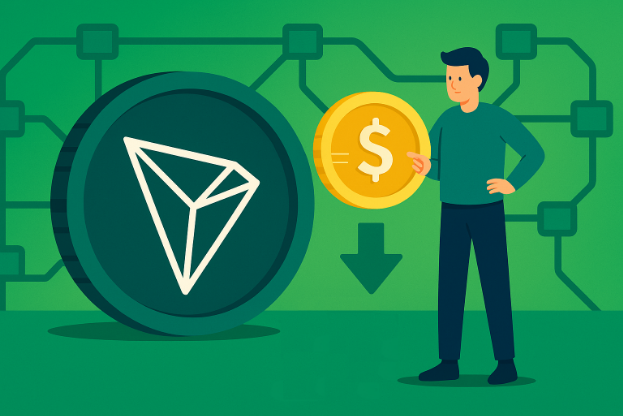
July,21,2025, Most people don’t realize it, but they’re paying far more than necessary on TRON transaction fees. This happens because users often send transfers by simply burning TRX tokens to cover the cost, even though there are ways to avoid this altogether. When you’re making frequent transactions, these unnecessary fees can add up quickly and become a significant expense.
In this article, the BitHide team breaks down exactly how the TRON blockchain works and shares practical strategies your business can use to save up to 50% on network fees. If you’re processing crypto payments regularly, these tips can significantly reduce your operational costs.
Fees in TRON: Cost and Purpose
In the TRON network, transaction fees work differently compared to other blockchains. Instead of paying a simple gas fee like on Ethereum, TRON uses two main resources: Bandwidth and Energy.
- Bandwidth is needed for standard transactions, such as sending TRX or activating new wallet addresses. Each account receives a small amount of free Bandwidth daily, but if you run out, you’ll need to freeze TRX to get more — or burn TRX tokens to cover the transaction.
- Energy is used when executing smart contracts, including transfers of TRC-20 tokens like USDT. Unlike Bandwidth, Energy isn’t given for free. You have to either freeze TRX to generate Energy or burn TRX directly to pay for it.
When you pay a fee in TRON, you’re not paying a person or a company. Instead, you’re covering the cost of network resources needed to process and confirm your transaction on the blockchain. This fee ensures your operation is recorded securely and quickly.
Paying with Energy: How Freezing TRX Saves You Money
In TRON, Energy is required for running smart contracts, such as transferring TRC-20 tokens like USDT. You can pay for Energy in two ways: burn TRX each time you make a transaction, or freeze TRX to generate Energy daily for free.
While freezing TRX ties up capital, it’s often worth it for businesses making daily or frequent payments. Instead of paying $3 to $8 per USDT transaction, you can generate the Energy needed to process transfers without additional fees. This strategy quickly pays off if your business handles large payment volumes. However, this is not the only way for businesses to reduce transaction costs on the TRON network.
How BitHide Helps Businesses Save on Transaction Fees
BitHide’s no-KYC crypto wallet offers built-in transaction optimization for TRON payments. Instead of burning TRX to cover fees, BitHide allows businesses to pay network costs directly from their billing balance (BHUSD). This approach reduces transaction fees by up to 50%. Also, now there is no need to calculate TRX needed for the commission.
Example
The fee for a single USDT-TRC20 transaction paid in TRX may be around 28 TRX. It’s approximately $7.50. When paid from the billing balance in BHUSD, it costs only $3.60.
This means that for the same amount you would spend on 100 transactions paid in TRX, you can now process up to 208 transactions in BHUSD — resulting in actual savings of up to 50%.
Conclusion
Yes, many users end up overpaying on TRON transaction fees, but it doesn’t have to be that way. Freezing TRX is a smart option to avoid burning tokens for every transfer. Even better, you can use payment solutions like BitHide that help businesses save on USDT TRC20 fees automatically and keep your transactions efficient and cost-effective.
Media Contact
Email : support@bithide.io
Phone Number : ±35797553734
Adress: 124 City Road, London EC1V 2NX, United Kingdom

